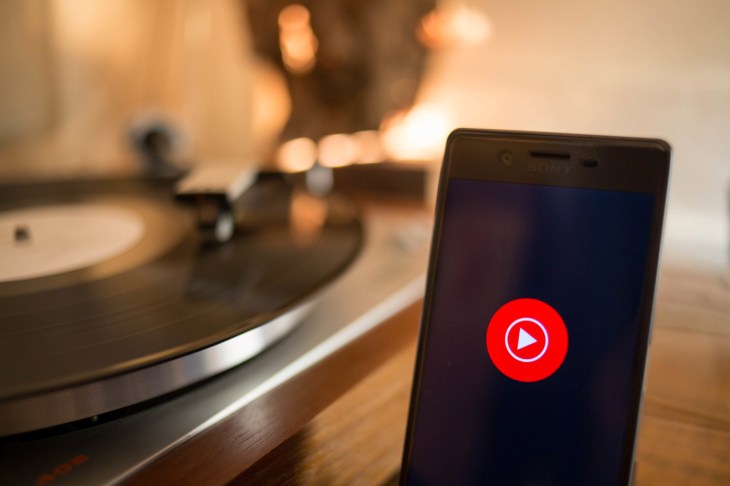The rise in popularity of affirmations, calming music, and music for inner reflection have been swift since 2020, largely due to the pandemic. With people being confined to their homes, they have come to realize the difficulty of being alone with themselves. This is where meditation apps have come in handy, and Headspace was the first successful app in this space, having been founded in 2010.
As of 2023, we can observe that meditation is gaining even more popularity, given the worsening of the global economy and other negative political news. As humans, we all need to learn to cope with our fears and stress, making the development of a mobile meditation app an excellent idea. In this article, we will delve into the necessary steps for meditation app development.

A guide to Getting Started with Meditation App Development
To increase your chances of creating a successful meditation app, we recommend following several key steps:
Step №1: Business Idea
Before beginning the development process, it’s important to understand your primary goal. What do you hope to achieve with your app? Develop a strategy to help you gain popularity, and give careful thought to how you can attract and retain users. Ask yourself: “What sets my app apart from the competition?” The answer to this question will become your app’s main strategy.
Step №2: Design
To effectively aid users in managing anxiety, stress, and enhancing their mental health, it’s crucial to create an app with a user-friendly design that promotes comfort and tranquility. Additionally, it’s essential to carefully consider the colors and their psychological effects on users. For instance, the color red can sometimes evoke negative emotions such as anxiety and anger, while softer hues such as pastel pink and green are often associated with calmness.
Step №3: MVP
Firstly, you should determine the platform you want to develop your app on, namely iOS or Android. Generally, creating an app for both platforms is more profitable as it expands your potential market and thus increases revenue. To save costs, you can employ cross-platform development tools like React Native, which allow you to develop one app that functions on both operating systems. Implementing a Minimum Viable Product can help you test your ideas and obtain feedback from users, enabling you to release a polished and refined final product that is bug-free and user-friendly.

Must-have Features for Meditation App
Having learned the necessary steps for creating an app, let’s delve into the critical app features that will ensure you remain relevant and competitive.
Sign Up & Sign In Page
To start using any meditation app, users are greeted with a registration form. We strongly recommend simplifying this form as much as possible to allow users to quickly access the app. People usually prefer to avoid spending time on registration, so it’s important to omit unnecessary details. Simply asking for a username, password, email, and agreement to the Terms and Conditions should suffice. As for the Sign In page, it should only display fields for login and password. Adding any additional elements is not recommended.
User Profile
The user profile feature allows individuals to personalize their page by adding photos and a status, and configuring the app according to their preferences, such as changing the language or enabling notifications. If your goal is to bring together a community of like-minded people, you can incorporate a “friends” feature to allow people to connect and support one another.
Library of Meditations
The content of a meditation app is essential to keep users engaged and increase their retention rate. The more diverse your content is, the more users will stay in the app, browsing and trying new sessions. Typically, meditation apps offer various lengths of meditations, guided and unguided options, and themed sections such as sleep, anxiety, fear of flying, and more. We suggest organizing meditations into logical groups to enable users to navigate the library quickly.

Furthermore, when developing a mindfulness app, it is a good idea to consider implementing different voices, such as male and female narrators. For instance, both Headspace and Calm invite celebrities to record guided meditation sessions for their apps, including LeBron James, Matthew McConaughey, or Lucy Liu, to help users relax their minds.
The Play & Stop Buttons
In a meditation app, the “Play” screen does more than just provide user comfort; it also serves as a call-to-action. The large and vibrant “Play” and “Stop” buttons are designed to entice users to dive into and explore the meditation sessions. Additionally, since most meditation techniques require closed eyes, it’s best to include a 3-5 second pause between when the user taps “Play” and when the meditation begins. The following are essential elements that should be included on this page to ensure user satisfaction:
- Play & Stop buttons;
- Scrubber to indicate the duration of the meditation;
- Rewind buttons;
- Sound settings, such as volume, speed, and voice.
Personal Progress
Enable users to track their progress in meditation. Displaying their results and rewarding them with badges can inspire people to maintain their meditation practice. Headspace and Calm offer features like this, giving users streaks for consecutive meditation sessions or completing a course. Incorporating this feature into your meditation app is an excellent idea.
Push Notifications
Push notifications can keep users engaged with your meditation app. Headspace uses this feature to send mindful and inspiring messages throughout the day, while Calm offers a daily reminder to meditate. These notifications can act as triggers to open the app.
Payment Options
In-app purchases and subscriptions are how your app generates revenue, so payment interfaces should be simple and easy to use. We recommend prioritizing popular payment options such as credit/debit cards, ApplePay, GooglePlay, and PayPal integration. The choice of payment options should be based on what you’re comfortable working with and what your target audience prefers.
How to Monetize the Meditation App
There are four common monetization models for meditation apps. By using one or a combination of these models, you can generate revenue and sustain the business. It’s essential to choose a monetization model that aligns with your target audience and business goals.
Subscription is the most popular way for meditation apps to generate revenue. For instance, Headspace offers 14 days free trial and then charges $5.83 per month or $69.99 per year. Similarly, Calm offers a seven-day free trial, after which users must pay $12.99 per month or $69.99 per year. Alternatively, some apps allow a one-time payment to access the meditation catalog indefinitely, such as Calm’s $399.99 price point.
Fee per download is another model, used by apps like Buddhify, which charges $7.44 for iOS and $5.99 for Android devices.
In-app ads can generate revenue but may also deter users. Apps such as Deep Meditation use ads for their free sessions but offer an ad-free version for a small fee.
Partnerships and sponsorships are also viable options, given the mature audience of mindfulness apps. Headspace, for instance, has collaborated with Amazon, Air Canada, Nike, and Spotify. A full list of their partners can be found on their website.
Conclusion
While industry and app studies on meditation provide imprecise estimations due to the fact that not all app users register and not all companies share their statistics, we can still roughly ascertain that 16% of the adult population in the United States, or 51 million people, practice meditation. Globally, meditation is an essential part of the daily routine for over 300 million individuals. Developing a meditation app is a lucrative idea, as it offers a substantial market whose requirements can be satisfied through the use of your app.
Discover more from TechBooky
Subscribe to get the latest posts sent to your email.













